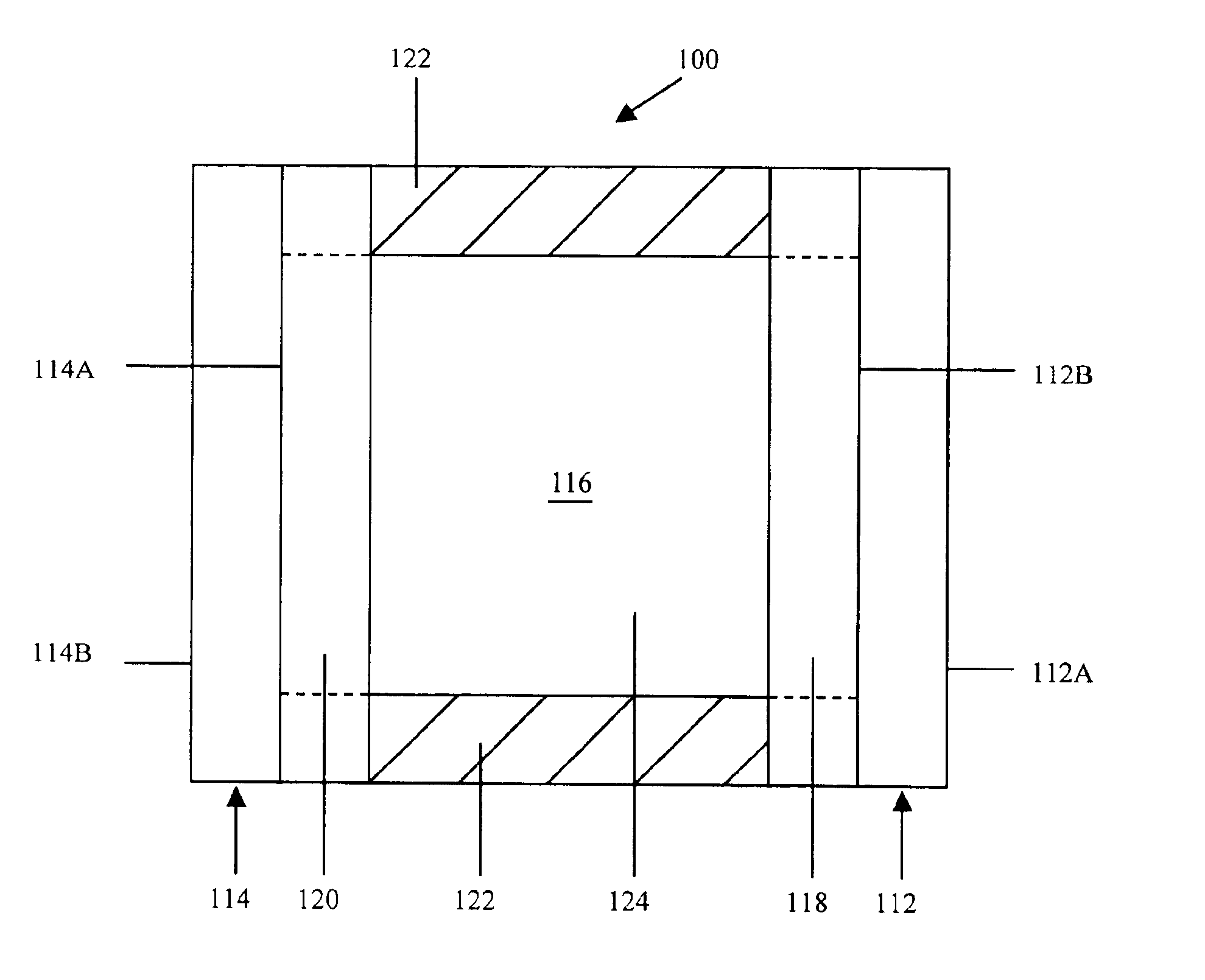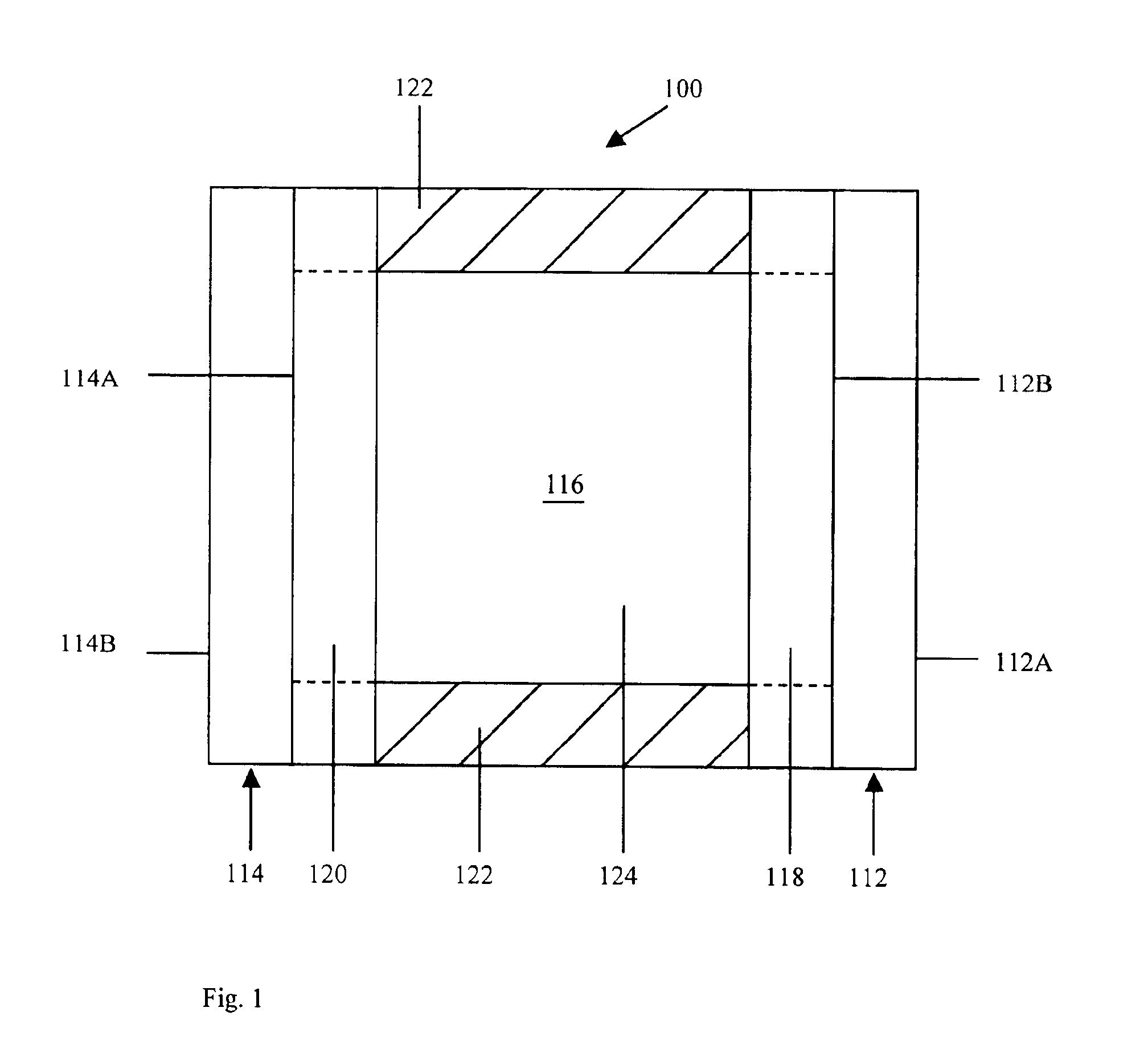Tristate electrochromic device
a technology of electrochromic devices and tristates, applied in non-linear optics, instruments, optics, etc., can solve the problems of prior art devices being limited in a number of applications, unable to enable users to selectively absorb light in the visible or near-infrared region, etc., and achieve the effect of sufficient stability
- Summary
- Abstract
- Description
- Claims
- Application Information
AI Technical Summary
Benefits of technology
Problems solved by technology
Method used
Image
Examples
Embodiment Construction
Referring now to the drawings and to FIG. 1 in particular, a cross-sectional schematic representation of tristate electrochromic device 100 is shown, which generally comprises first substrate 112 having front surface 112A and rear surface 112B, second substrate 114 having front surface 114A and rear surface 114B, and chamber 116 for containing electrochromic medium 124. It will be understood that tristate electrochromic device 100 may comprise, for illustrative purposes only, a window, a mirror, a display device, and the like. It will be further understood that FIG. 1 is merely a schematic representation of tristate electrochromic device 100. As such, some of the components have been distorted from their actual scale for pictorial clarity. Indeed, numerous other electrochromic device configurations are contemplated for use, including those disclosed in U.S. Pat. No. 5,818,625 entitled “Electrochromic Rearview Mirror Incorporating A Third Surface Metal Reflector,” and U.S. Pat. No. 6...
PUM
| Property | Measurement | Unit |
|---|---|---|
| wavelength | aaaaa | aaaaa |
| wavelength | aaaaa | aaaaa |
| wavelength | aaaaa | aaaaa |
Abstract
Description
Claims
Application Information
 Login to View More
Login to View More - R&D
- Intellectual Property
- Life Sciences
- Materials
- Tech Scout
- Unparalleled Data Quality
- Higher Quality Content
- 60% Fewer Hallucinations
Browse by: Latest US Patents, China's latest patents, Technical Efficacy Thesaurus, Application Domain, Technology Topic, Popular Technical Reports.
© 2025 PatSnap. All rights reserved.Legal|Privacy policy|Modern Slavery Act Transparency Statement|Sitemap|About US| Contact US: help@patsnap.com



